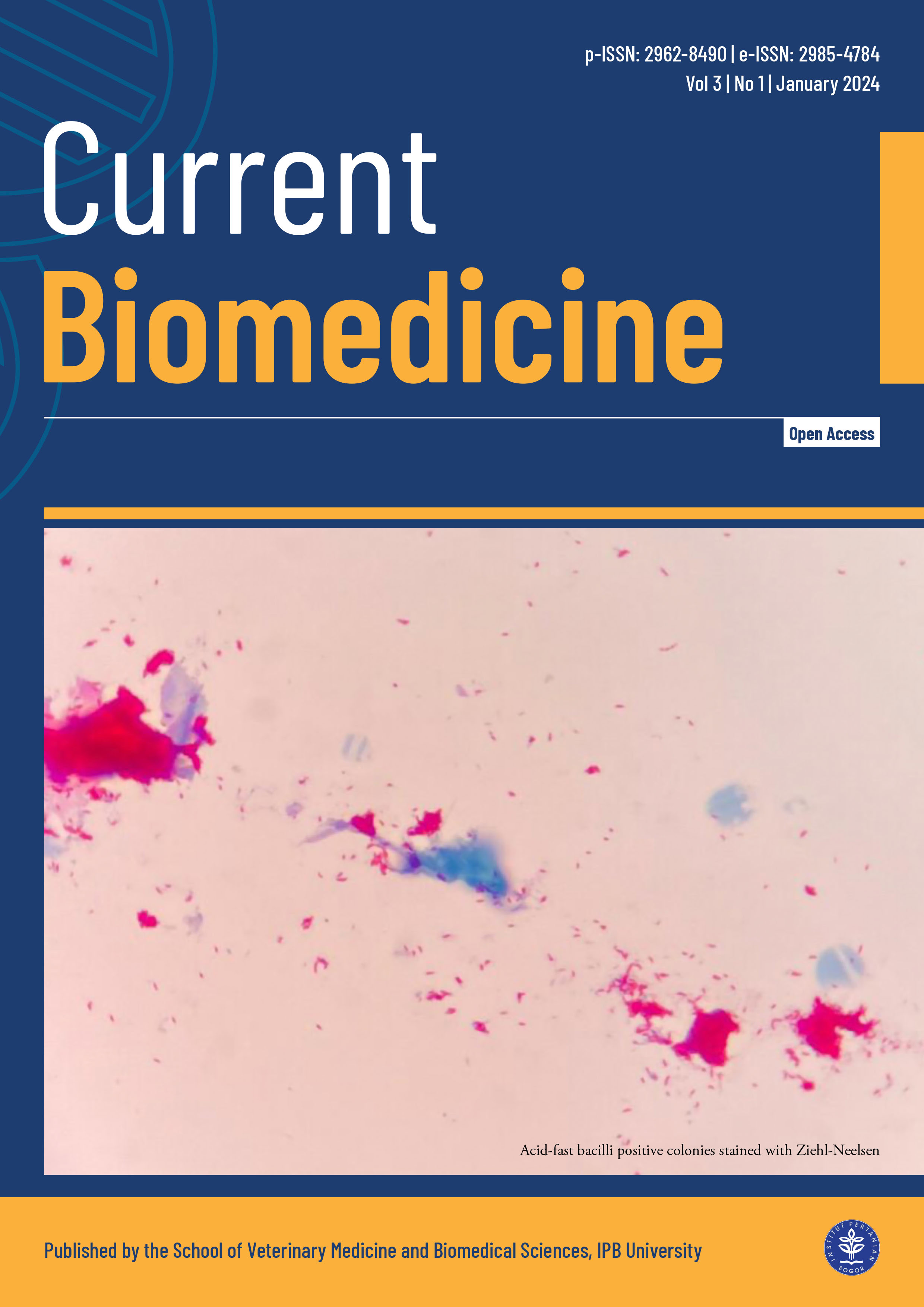Quantification and identification of bacterial presence in salted eggs
DOI:
https://doi.org/10.29244/currbiomed.3.1.43Keywords:
bacterial contamination, black egg yolk, microbial identification, salted eggs, total bacteria countAbstract
Objective This study aimed to quantify the total bacterial count in salted eggs and identify bacterial species that may affect their quality.
Methods Fifty samples consisted of 10 fresh salted eggs that passed the candling test, 10 portions of pasta dough at 0, 3, and 6 hours, and 10 fresh salted eggs that had failed the candling test (black egg yolk). Each sample was tested in triplicate. The total bacterial count was determined using the plate count agar method, and bacterial identification was based on phenotypic analysis, which included Gram staining and biochemical tests.
Results The total bacterial load in fresh salted eggs was below the maximum limit set by SNI 7388:2009 (1×105 CFU/g), whereas the pasta dough and black egg yolk exceeded this limit. The identified bacteria included Escherichia spp., Enterobacter spp., Proteus spp., Staphylococcus spp., Pseudomonas spp., and Bacillus spp.
Conclusion Although the bacterial count in salted eggs meets SNI standards, the presence of potentially harmful bacteria highlights the need for enhanced hygiene and sanitation measures to be implemented during the production of salt eggs.
Downloads
Downloads
Published
Issue
Section
License
This journal is published under a Creative Commons Attribution (CC BY 4.0) International License. This license enables reusers to distribute, remix, adapt, and build upon the material in any medium or format, so long as attribution is given to the creator.













